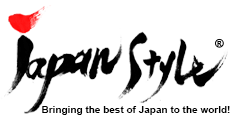In the Japanese tea ceremony, it is traditionally said that “first Raku, second Hagi, and third Karatsu (ichi Raku, ni Hagi, san Karatsu),” meaning Raku ware is the best pottery for the tea ceremony. What makes Raku the best is the feel of it; the earthy, soft texture you can feel in your hands and on lips is perfect as a teabowl.
Since Raku ware started 400 years ago in Kyoto, the unique technique has been passed on to from generation to generation without crease in Raku family. It is not exaggerate to say that Raku ware has been produced just for the tea ceremony.
The pioneer of Raku ware is a naturalized Japanese man named Ameya, whose son Chojiro became the first generation in the Raku family line. Chojiro was initially a bricklayer, but as he enjoyed a master of the tea ceremony, Sen no Rikyu’s favor, he started making teabowls.
There are two main kinds of Raku ware; Kuro Raku (Black Raku), and Aka Raku (Red Raku). Black Raku is literally used dark glaze called cha-gusuri, on which water dries quickly, and sometimes has slightly gold color. It is thick and has high foot with cut. Black Raku was started by Chojiro between 1581 and 1586. Red Raku is made of red clay and coated with semitransparent glaze containing feldspar.
This is JAPAN Style!







![[Photoblog] The Full Moon](http://www.japanstyle.info/wp-content/uploads/2011/02/tumblr_lelvt7JCoP1qg5ddgo1_400-65x65.jpg)

![[Photoblog] A Temple in the Dusk…](http://www.japanstyle.info/wp-content/uploads/2012/03/20120313_photoblog_a-temple-in-the-dusk-65x65.jpg)

One thought on ““Raku Ware” the Earthy and Soft Pottery”